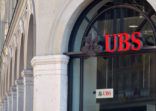Notwithstanding a lower-than-expected 2014 return, the global loan market navigated the year in reasonably sound fashion. While credit fundamentals remained relatively healthy, investor sentiment and average loan prices were buffeted by a series of external headwinds, including divergent views as to interest rate expectations, global economic health, geopolitical risk and escalating regulatory pressure on US financial markets.
The energy sector added another challenge in December. Despite the loan market’s significant underweight to energy as compared to high yield bonds (4-5% vs. 15-17%), loans were pressured by the stress and sell-off in both high yield and equities. As a result, the S&P/LSTA Leveraged Loan Index (the S&P/LSTA Index) returned 1.60% for the year. The final number was not what most envisioned, but was still positive (loans have had only one negative year in recorded history).
Loans vs HY bonds
2014 underscored the behavior of loans and high yield bonds (HYB) in both robust and stressed market conditions, at least in the post-crisis era. Loans underperformed HYB (2.50%, as represented by the BofA/ML High Yield Bond Index) for the full year, but outperformed in the second half of 2014 (-0.98%, vs. -2.97%).
Since loans can rarely compete with HYB on coupon alone, the difference was volatility and increasing energy related credit risk. The S&P/LSTA Index posted a lagging annualized standard deviation of 1.86% for 2014, compared to HYB at 4.33%.

Additionally, the Sharpe ratio for the S&P/LSTA Index was 0.84 vs 0.57 for HYB in 2014.

Demand vs supply
Shifting market technicals – investor demand versus overall supply – not fundamental credit risk, were the real story of the year. Arguably the largest impediment to projected loan performance was the persistence of short-term rates at all-time lows, despite increasingly positive US economic data. Stemming from this, demand from US retail investors waned.
While the decline in mutual fund/ETF loan investment was offset by CLO and institutional inflows (the former posting an annual record of $125 billion), selling pressure from open-end retail funds in order to create liquidity put persistent weight on secondary prices. On the other hand, new issue supply was strong, and the universe of index loans expanded to a record $831 billion at year-end.
Although trailing default rates by amount picked up slightly in 2014, they were down when measured by issuer count. The default rate by principal amount closed the year at 3.24%, up from 2.11%, inclusive of the very large, but anticipated default of Energy Future Holdings (EFH, formerly TXU). Excluding EFH, the year-end figure was 0.34%, versus a historical average of 3.24%.
The default rate by issuer count decreased to 0.62% from 1.61% at the end of 2013. Default rates for 2015 should remain moderate (subject to no material untoward economic or macro developments).
Loan advantages and risks
We believe there are solid reasons why loans look interesting in 2015, including attractive yields, improved valuations with potential capital gain upside, and widening credit spreads. (Dare we also mention the prospects of rising interest rates…?)
For those concerned about taking greater credit risk, historical data shows that secured loans carry less risk of loss given default than a typical unsecured HYB. And loans, by way of being secured by issuer assets and floating rate, are inherently less volatile than most other high income producing asset classes.
That is not to say loans don’t have a unique set of risk factors. December reminded us of the liquidity challenges loans continue to face. While asset-level liquidity (actual trading volumes, the number of dealer desks making a market in a given issue, and the width of the bid-ask spread) has been adequate through most market conditions, settlement liquidity (the time it takes for cash to change hands) remains a potential concern, particularly against a backdrop of persistent outflows from open-end retail platforms and less capital buttressing banks’ trading activities.
So far, so good in this area, but the astute loan investor should remain vigilant in analysing this dynamic.
Our overall Index total return expectation for 2015 is in the 4-5% band, with a mild bull case at 6-7% (i.e., coupon plus two to three points of market value pickup). A moderate to angrier bear case (2-3%) potentially created by an unexpected spike in volatility, we believe would be driven by factors external to the loan market.
This sponsored commentary was contributed by Jeff Bakalar, managing director and group head of the senior loan group at Voya Financial, which is the sub-advisor for NN Investment Partners (formerly known as ING Investment Management).
















